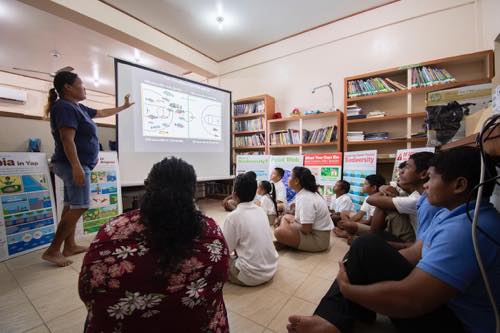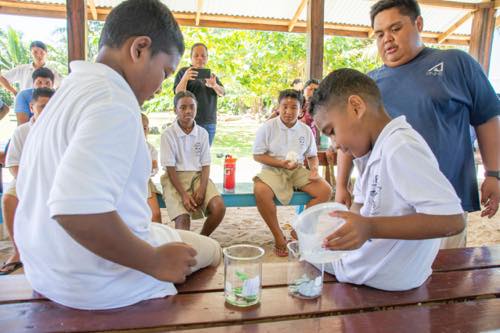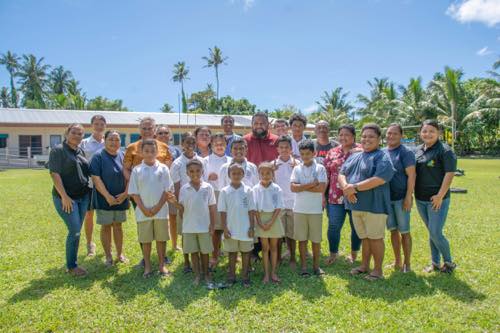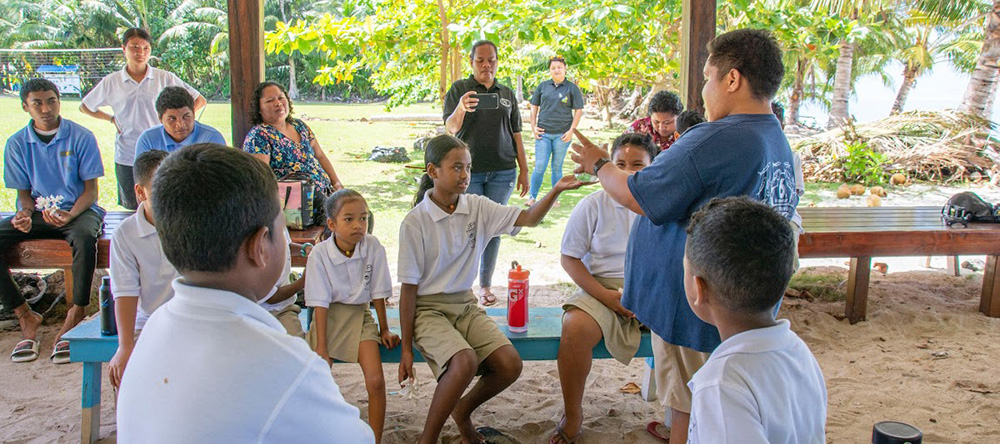- Education
PICRC’s outreach team visits Kayangel Elementary School
In November, the Palau International Coral Reef Center (PICRC) brought their outreach programs to Kayangel Elementary School in Palau’s northernmost state. 16 students attended the session, most of whom were younger than 17.
The visit to Kayangel Elementary School follows similar programs that took place at Angaur Elementary School and Peleliu Elementary School in the previous months. These programs are to help target the outlying states that aren’t always available for other activities organized by PICRC. The outreach team aims to provide hands-on activities and presentations to these schools to engage the students with PICRC’s research.
The program began with a video on the Palau National Marine Sanctuary. PICRC researcher, Dawnette Olsudong, then discussed the effectiveness of marine protected areas on fish biomass, coral cover, and macro-invertebrates.


Communications and Outreach Officer, Singe Hideos, presented a lesson on invasive species. Using four case studies, Singe explained how some species, such as lionfish and monkeys, can become invasive and cause harm to agriculture and native species when people release them into new areas.
Following this, Singe delivered a hands-on lesson on heat tolerant coral and ocean acidification. Research has shown that many of Palau’s reefs have a high proportion of heat tolerant coral, indicating that these species are better adapted to living in a warmer ocean. The outreach team used imitation coral to showcase how some coral are heat sensitive while others are heat tolerant. Some of the imitation coral changed color if soaked in hot water, while others did not. The students poured hot water over both and compared them to each other.
The Center also donated copies of the Palau Aquarium Activity Book and posters on invasive alien species and the Palau National Marine Sanctuary to the school.
“It’s important that we bring this information to schools like Kayangel, which are far from Koror and don’t have easy access to the Center’s resources,” said Research Director Geraldine Rengiil. “We were able to do these outreach activities through coordination with the school principal and teachers.”



